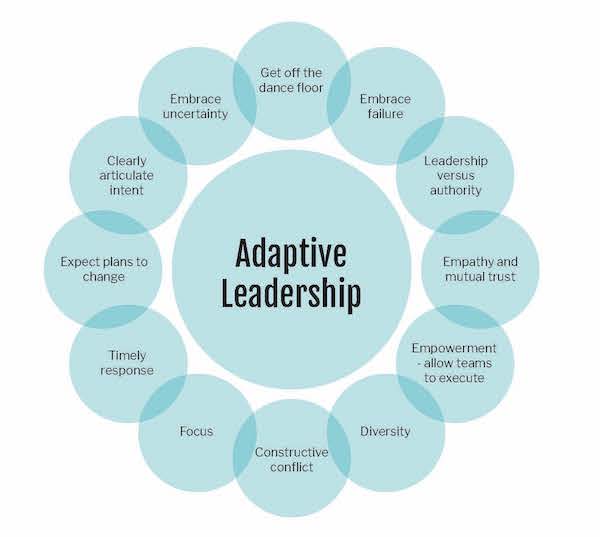In my last series of blogs, I explored the “Give It Up” model whereby true leaders need to move from a command and control style of leadership and towards one of delegation and trust.
Not only do leaders need to give up control, but they also need to become adaptive leaders and be able to chart a course when they cannot predict the outcome of their choices.
My Adaptive Leadership Model below illustrates what a leader has to undertake to become an adaptive leader.

Timely response
Making good and timely responses is at the crux of adaptive leadership. In a rapidly changing environment, the adaptive leader and their employees need to be ahead of the game. They need the capability to detect, filter, and decode signals so that they can anticipate what is coming and respond accordingly.
Adaptive leaders need to make sure that the organization is constantly looking outside the organization and staying close to the customer, the competition, and the commotion of technological disruption. This is the only way organizations will stay ahead of the game.
The need for adaptive leaders to make timely responses can be likened to the military: quick decisions have to be made on the front-line. There is no time for deliberation. Leaders are combat-ready and rapid decision-making is an inherent quality.
This is epitomised in Marine instruction. When you’re 70% ready and have 70% consensus, act. Don’t shoot from the hip, but also don’t wait for perfection.
Note that the 70% is a metaphor, not a strict metric. The message is about the necessity to balance deliberation and action in order to affect a rapid response.
The lesson is directly applicable to organizations. Adaptive leaders have to make quality and timely decision under complex and ambiguous conditions.
The crux is that adaptive leaders need to intensify the agility of the organization to change direction quickly. This is achieved by decentralising decision-making and placing it where it is best suited.
Employees need to be given the accountability to sense a situation, read the signals and respond accordingly. Timely responses will not occur when decisions have to trickle up and down an organizational hierarchy.
Expect plans to change
Adaptive leaders teach and coach their employees that change is constant and the plans we made yesterday may have to change tomorrow. Employees feel a sense of calm when plans change because it was expected.
When an organization is truly agile, change is anticipated, expected, and entrenched into the DNA of the organization. This agility is not something that gets added on when plans change; it is baked into the essence of the organization.
The ant and the dinosaur are both prehistoric species. The ant is still here while the dinosaur is extinct. The reason being that the ant was able to respond to a changing environment while the dinosaur could not. Given the large size of the dinosaur, the time to process information from head to tail, back again, and respond accordingly left them completely vulnerable to change.
In today’s time of constant change and turbulence, agility and anticipation of change are crucial to survival. Organizations with inertia will end up like the dinosaurs.
Article by channel:
Everything you need to know about Digital Transformation
The best articles, news and events direct to your inbox
Read more articles tagged: Featured, Leadership







